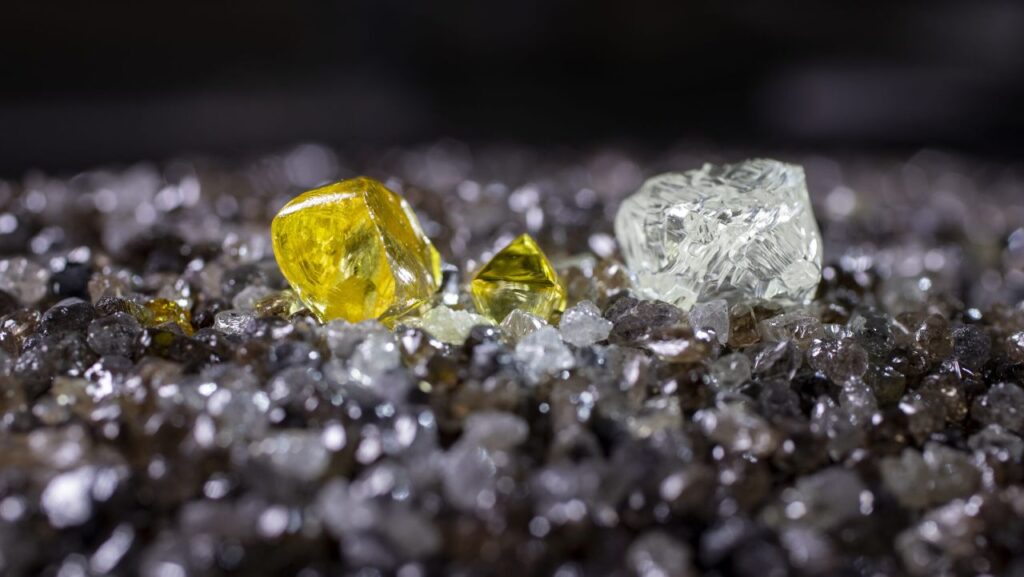Diamonds are one of the most precious items available in the market. But can you tell what makes them so valuable? Yes, scarcity is one factor that contributes to a diamond’s worth, but there is another factor that no one thinks of. This factor can be understood by looking at the journey of a diamond from the time it is mined to the time it is available for retail in the market. A diamond’s journey to the market is a tough one. Ballads can be written on the journey a diamond goes through for people to realize its worth. In this blog post, I’ll take you through the journey of a diamond from when it is mined to when it is used in bespoke diamond jewelry. So, get your glasses ready and read on this amazing journey through which a diamond finds its worth.
Exploration
You might have heard the phrase “unearthed a diamond” used to describe someone who has the potential to be great in what they do. This phrase is mainly used in sports for newcomers who impress everyone with their performance. But the keyword here is “unearth,” which implies the process through which a diamond is first found. As you already know, diamonds are mined from earth using various mining methods, but the exploration process is the first step in the journey of a diamond.
Diamonds are forced to the surface of the earth by heated gasses deep underground. These gasses force diamonds and kimberlite stones towards the surface, and then experts (explorers) look for changes in the magnetic field by the kimberlite rocks to pinpoint where diamonds are expected to be found.
Mining
Mining is the second step of the diamond journey. In this process, diamonds are extracted in rough form. The following methods are used in the mining process.
1- Open Pit Mining
The process is most useful when diamonds are found near the surface. In this process, a cut is made to the surface of the earth, and then excavators lift the surface, forming a pit. This allows the diamonds to finally contact the atmosphere above the surface. Then, the diamonds are extracted from all the sand and rocks. This is done by putting sand from the pit on a conveyor belt that goes through a pressure washer, revealing the ores. Conveyor belts are used in large-scale operations. Otherwise, laborers dig into the pit and extract the ores by hand.
2- Underground Mining
Tunnels are dug to create small rooms under the earth’s surface to extract diamonds in this method. The rooms are supported by timber to make them secure and prevent collapsing.
3- Marine Mining
As the name suggests, this method is used in places near water bodies (rivers, etc.) or where a water body used to flow through. Diamonds were formed millions of years ago, so some might have reached the earth’s surface before their mining even began. And since rain and floods were common back in the day, there is a possibility that those diamonds might have ended up in a river. Experts predict a point in the river body where diamonds can be expected to be found, and then the extraction process begins.
4- Artisanal Mining
This process is non-commercial and depends on manual labor to extract diamonds using the most basic tools like pans and sieves.
Once the ores are extracted, they undergo many processes, like blasting, cutting, and processing. The ores containing the rough diamond are scanned using the latest X-ray technology to determine the shape of the diamond. More than 250 million rough diamonds are mined annually, and only a quarter make it through as gem-quality diamonds.

Sorting
The next step is to sort, classify, and value the rough diamonds after they have been mined and processed. During the time spent arranging, the harsh precious stones are assembled into many classifications based on their size, shape, quality, and variety.
Cutting & Polishing
Cutting and polishing is the next step in this journey. The rough diamonds are sent to diamond-cutting centers in New York, Antwerp, Tel Aviv, Mumbai, Johannesburg, China, and Thailand. Most of the polishing process is done by hand using techniques passed down from the early diamond cutters.
Manufacturing
The next step is jewelry manufacturing, be it bespoke diamond jewelry, diamond engagement rings, diamond necklaces and much more. This is the process by which diamonds are made into a product that consumers can use/wear.
When polished, diamonds are sold and exchanged in the 24 enrolled jewel bourses worldwide. At this point, the manufacturer is responsible for setting the polished diamonds into finished jewelry pieces. The United States, India, China, Italy, Spain, Thailand, and Turkey have developed solid reputations in jewelry production.
Retailing
Lastly, diamond jewelry is either sold directly to the retailer or to a wholesaler who acts as a broker to sell the goods to the retailer. Retailers then sell diamond jewelry to customers.
Conclusion
Diamonds are valuable not only because of their beauty and scarcity but also because of the process through which they reach the market. This is also the reason that lab-produced diamonds cost less than those extracted naturally.





 No products in the cart.
No products in the cart.